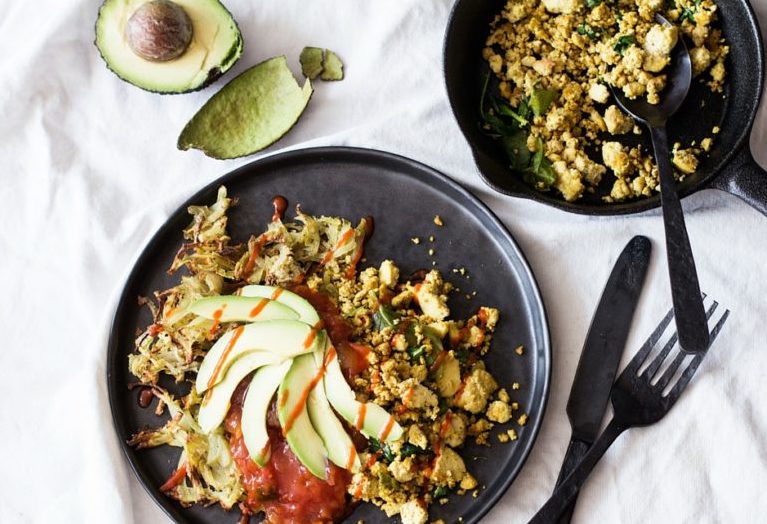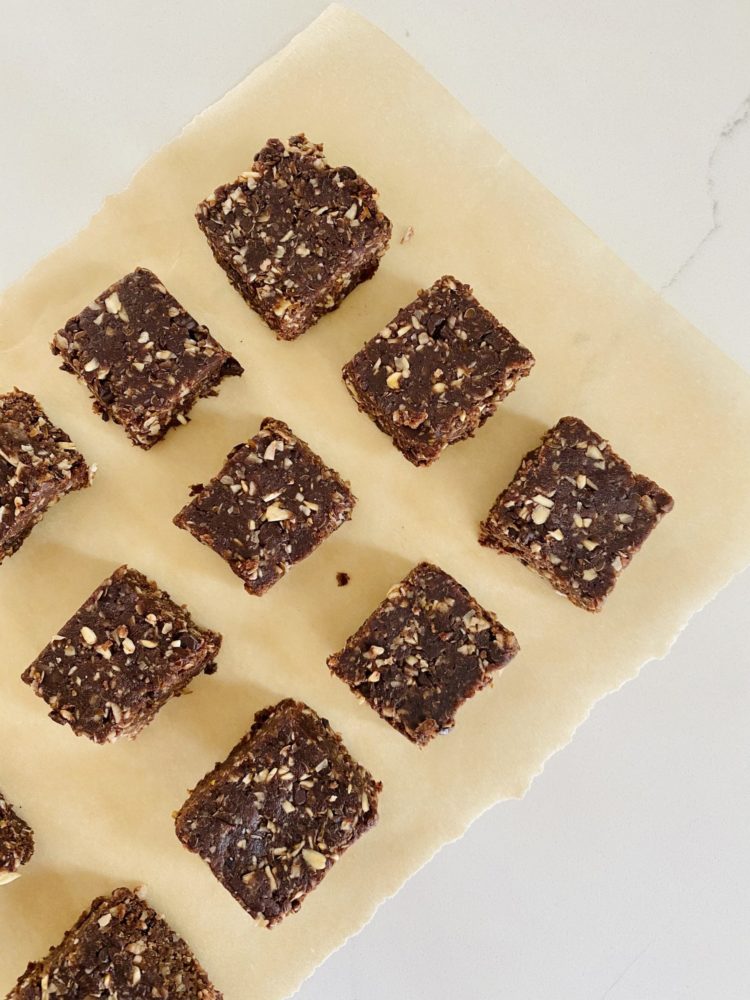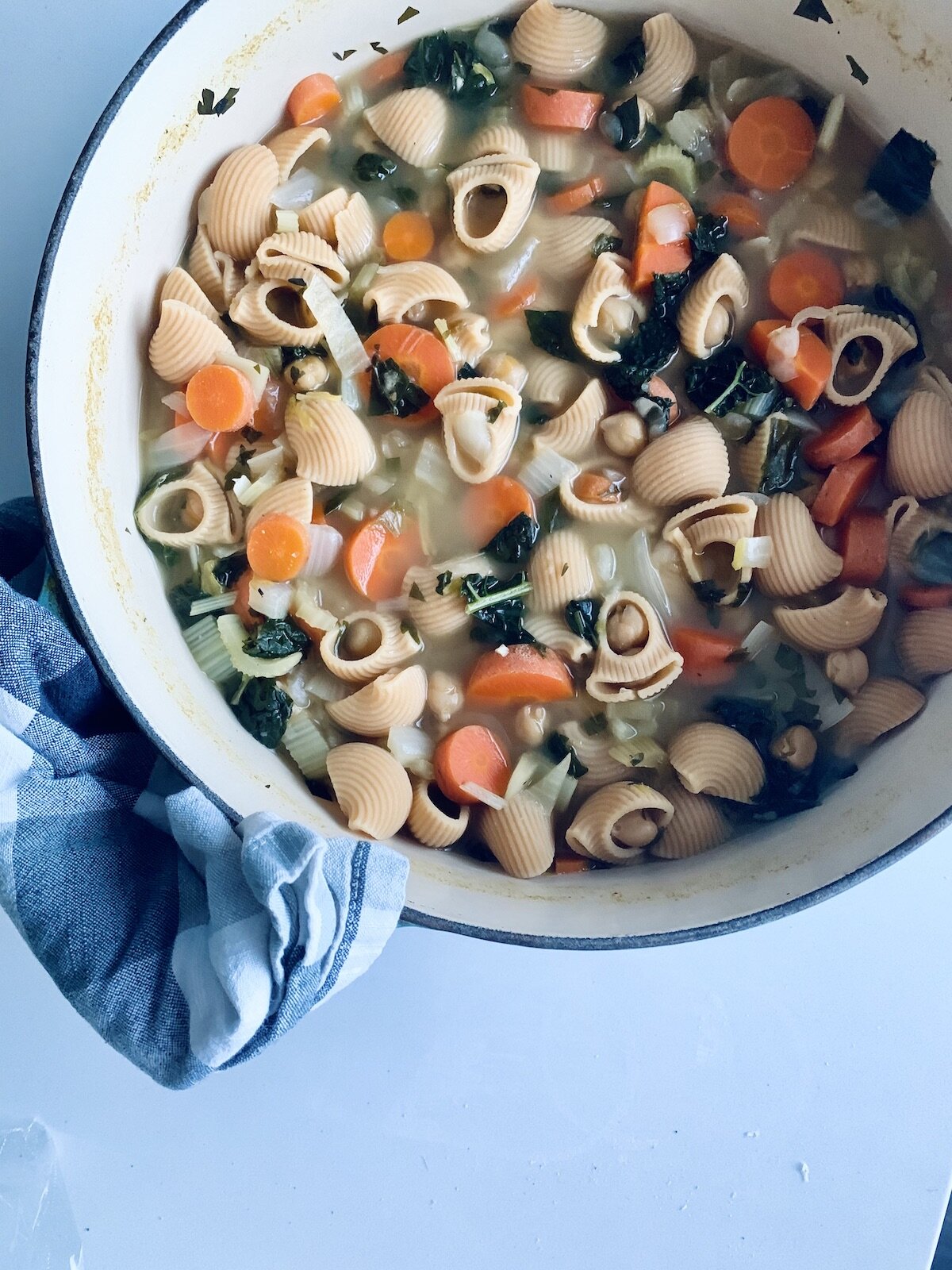Do you know if you’re an intuitive eater? Most women I work with aren’t sure where they stand on the spectrum of eating intuitively and dieting. If that sounds like you, then you are in luck! The Intuitive Eating Scale (IES) is a validated tool that actually measures your intuitive eating skills. And for my plant-based women out there, I adapted the IES for you and created the Plant-based Intuitive Eating Quiz. In this article, I’m sharing the history of the original IES tool, how and why I created a plant-based version, and how you can discover your intuitive eating score for free in just a few minutes (plus, next steps to take!).

What is intuitive eating?
For a full review of intuitive eating and how it fits with plant-based eating, read this post. Here is a short summary of this life-changing eating framework.
Intuitive Eating is a comprehensive, evidence-based approach to eating that promotes a healthier relationship with food and body image, free from the constraints of traditional dieting. As a weight-neutral philosophy, it focuses on improvements in health and well-being rather than weight loss, emphasizing the importance of listening to and honoring your own body cues, including hunger signals, fullness cues, and satisfaction.
At its core, Intuitive Eating encompasses 10 guiding principles designed to cultivate attunement with one’s internal biological signals while dismantling the barriers created by diet mentality. These principles collectively encourage individuals to embrace their inherent ability to regulate their eating based on personal needs and preferences, rather than external rules or societal pressures.
By focusing on internal cues rather than external “rules” or “shoulds”, you are free to rediscover the natural rhythms of your body and the joy of eating. This approach recognizes the complexity of human emotions and experiences related to food, providing a framework that supports emotional health and well-being. Whether you struggle with emotional or binge eating, or simply crave a more peaceful relationship with food, Intuitive Eating can help.
What is the intuitive eating scale?
The Intuitive Eating Scale (IES) is a validated psychometric evaluation designed to assess the concept of intuitive eating, which emphasizes a health-centered approach to food and body image rather than a weight-focused one. Developed by Tracy L. Tylka in 2006, the scale has undergone several revisions to enhance its reliability and applicability across different populations.
The most recent iteration, the Intuitive Eating Scale-3 (IES-3), released in May 2024, consists of 12 items that are organized into a four-factor structure. These factors include:
- Unconditional Permission to Eat: This factor assesses the individual’s acceptance of their right to eat anything they desire without guilt.
- Eating for Physical Reasons: This dimension evaluates whether a person eats primarily due to physiological hunger rather than emotional triggers.
- Reliance on Hunger and Satiety Cues: This aspect measures the extent to which individuals listen to their internal body signals regarding hunger and fullness.
- Body-Food Choice Congruence: This factor considers how well an individual’s food choices align with their body’s needs and values.
The IES-3 is widely used in both research and clinical settings, providing insights into an individual’s eating behaviors and their relationship with food. Higher scores on the IES indicate a greater tendency towards intuitive eating, which has been associated with positive outcomes such as improved body image, reduced disordered eating behaviors, healthier weight management without dieting, and a more enjoyable relationship with food.
The IES not only addresses the psychometric properties necessary for credibility in research but also considers the diverse experiences of individuals regarding their relationship with food. It has shown strong reliability and validity across various demographics, ensuring it can be employed as a reliable measure of intuitive eating without bias related to age, gender, or body mass index.
What does it measure?
The Intuitive Eating Scale (IES) measures various dimensions of intuitive eating, providing a comprehensive understanding of an individual’s eating habits and behaviors. Specifically, it evaluates the following key areas:
- Emotional Eating: This dimension assesses an individual’s tendency to eat in response to emotional triggers rather than physiological cues. It helps identify if a person is using food as a coping mechanism for stress, anxiety, or other emotions.
- Satisfaction and Guilt: The scale examines how satisfied individuals feel with their food choices and whether they experience guilt or shame around eating. A lower score in this area may indicate that a person struggles with dietary restrictions or negative feelings surrounding certain foods.
- Attunement to Body Signals: This aspect gauges how well individuals recognize and respond to their body’s hunger and satiety signals. Being in tune with these cues is crucial for intuitive eating, as it fosters a more natural relationship with food.
- Food Choices and Mindfulness: This part of the assessment looks at whether individuals make food choices based on their physical needs and personal values, rather than external pressures or dietary rules. It also highlights the importance of mindfulness in eating, encouraging individuals to savor their meals
The PBM Intuitive Eating Quiz For Plant-based Eaters
As an Intuitive Eating Counselor, I’ve supported many women in healing their relationship with food. They usually feel uncertain where to begin and confused about how intuitive eating fits with their plant-based eating. This is exactly why I created the Plant-based Intuitive Eating Quiz. It’s adapted from the work of Tracy Tylka and the IES, adjusted to meet the needs of plant-based women.
How is it different?
The Plant-based Intuitive Eating Quiz contains 20 statements, and instructs you to check all statements that apply to you most of the time. For the most part, it reflects many of the same questions as the IES. But some of the questions are specific to those of us swimming in the sea of plant-based diet culture, which puts us on a unique path to finding a healthy relationship with food that incorporates the food values that are important to us.
So, why didn’t I just use the IES as it was written? Because plant-based eating naturally includes some level of food exclusion – exclusion that is not considered dieting when it’s rooted in your personal values, and the IES doesn’t reflect that critical nuance. Also, plant-based dieting shows up in slightly different and more specific ways that might fall through the cracks in a more general assessment. Although my version has not been validated, I believe it to be a better intuitive eating assessment for plant-based eaters than the original version.
How do you take it?
Want to know your plant-based intuitive eating score? Then take the quiz yourself right here! It’ll only take a few minutes to go through the 20 statements and mark the ones that feel true for you.
What does your intuitive eating score mean?
When you complete the quiz, your score will be automatically tallied and put into 1 of 3 categories:
0 – 5
If you answered “yes” to 5 or fewer statements, then you are well on your way out of diet mentality, but it likely still creeps in from time to time. Diet thinking is a slippery slope, so continuing to strengthen your intuitive eating muscle will help you avoid succumbing to plant-based diet culture.
6 – 10
If you answered “yes” to 6 to 10 statements, diet mentality is likely part of your plant-based eating. By practicing intuitive eating skills, it’s totally possible to untangle your plant-based eating from dieting and feel more at peace with food.
11 – 20
If you answered “yes” to 11 or more statements, you are likely deep in the trenches of dieting. Food probably feels pretty stressful to you, and sticking with plant-based eating probably feels very challenging. Now is the perfect time to start your intuitive eating journey, heal your relationship with food, and kiss dieting goodbye!
How to improve your intuitive eating score
Now that you have your score, you’re probably wondering how you can improve your intuitive eating skills. When you take the quiz here, you’ll get personalized recommendations on getting started. Here are some general first steps you can try:
- Listen to this short podcast episode for a brief overview of intuitive eating, how it fits with plant-based eating, and the first steps to take.
- Get in touch with your internal hunger signals and fullness cues. This post will help you with hunger, and this post will help you with fullness.
- Take my End Overeating Masterclass, especially if you struggle with emotional eating, or you cycle between trying to avoid certain foods and then losing control and eating too much of those same foods.
- Get on the waitlist for my Plant-based Intuitive Eating Program. This is for you if you’re ready to commit to healing your relationship with food for good!


